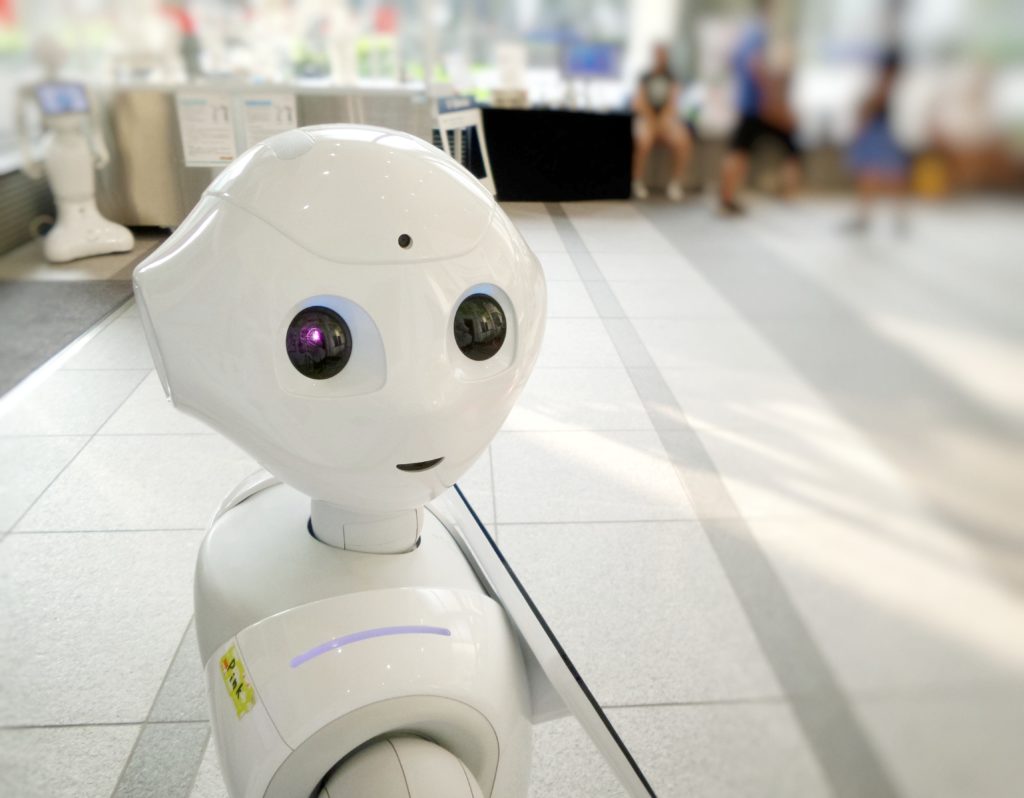Will Foreign Language Learning Become Obsolete?
Technology continues to disrupt business while enhancing our lives. We can order food, pay bills, and find directions all from our cell phones. And now, we can point our phone cameras at objects, watching as an app identifies a plant or instantly translates writing. So, it’s natural to ask how all this will affect the future of language-learning.
How will technology impact language learning? Will people even both learning a language in the future? Or, will language-learning go the way of the wagon wheel and eventually become obsolete? The answers to these questions may shock you.
The Role of Technology in the Future of Language-Learning

It shouldn’t be surprising that businesses will continue to leverage technology in language learning. Between AI, the Internet of Things, the Cloud, and Automation, every day, there seem to be new developments in what applications can do. And many of these advancements have made their way into the language learning sphere.
There are already a ton of apps on the market designed to help people reach fluency. All you need to do is visit your app store and pick one. But now, these apps are getting more complex. Augmented and virtual reality are the new buzzwords in language-learning. The idea is that if you slip on an expensive headset and “immerse yourself” in a foreign environment, you’ll quickly pick up a new language.
While these concepts may seem like technological marvels, they’re just rehashes of a teaching method called Teaching Proficiency through Reading and Storytelling (TPRS). With TPRS, the teacher guides the student using comprehensible input through various stories. These silly tales only serve to reinforce bite-sized language learning lessons. Engagement is high along with memory retention.
Technology Doesn’t Guarantee Fluency
Keep in mind that slapping technology onto everything isn’t a solution. What works best is what works for you. If you’re into tech and VR, then you’ll love apps that use those. If not, then you’re better off focusing on what you’re interested in.
One significant advantage of technology is the data it can provide. As apps become better, there’s a possibility that we can achieve deeper insight into which of those strategies work best with people and better adapt applications and programs to help various learners achieve fluency. It may be possible to make language-learning apps smarter, allowing them to better target you will more effective lessons.
However, technology has improved language-learning in general. The most effective apps are the ones that have Spaced Repetition Systems built into their platforms. These systems integrate review naturally into the lessons. As you learn new content, you revisit previous lessons in a way that helps you remember them longer. Apps also make language-learning more accessible. You can simply download one and start learning today. Previously, you had to order textbooks online or visit your local library for language-learning CDs.
How Will The Core of Language Learning Change?
Most language learning theories have been relatively consistent in the last few decades. The main language learning theories have remained unchanged for decades. They center around the works of famous linguists like Chomsky, Krashen, and Skinner.
We also have a better understanding of how memory and learning works. We know that learning a language requires access to comprehensible input. Your brain also needs time to build new neural pathways to store that information. And, you need to revisit lessons to help push them deeper and deeper into your long-term memory.

Moving forward, there may be some breakthroughs in our understanding of learning or how memory works. But for the most part, successful applications will build on existing methodologies. And any additional features will need to inspire, motivate, and explain language-learning in a clear way that gets users returning to the platform. Consistency will remain the key to fluency.
Will Translation Technology Make Language-Learning Useless?
Translation technology has made major advancements since its early, laughable days. And while more and more businesses rely on services like Google Translation, they’re far from perfect. But will they ever be? Probably not.
Robots continuously fall short at interpreting context. If you need a literal translation, you can type or speak into a translation app and get some words you can understand. But it’s not always accurate. More so, literal translations are even more inaccurate. And the more complex a sentence is, the more likely a chance for errors to occur.
Translation technology is a tool, but not a solution. It can help you get some understanding in certain situations, but it’s not a cure-all for the language barrier.
Will Schools Adopt New Language-Learning Measures?

Most likely, no. The entire education system in the US is outdated and in need of a thorough overhaul. And language-learning is not different. Teachers stick to lessons that encourage drilling and memorization. And they give anxiety-inducing tests that do more to put people off from learning a language than helping them achieving fluency.
As long as teachers treat language as a subject to study and not a tool to use, people will continue to struggle to reach fluency in a foreign language classroom. However, there is an increase in remote, online teaching. These types of environments provide students with better, one-on-one support that they wouldn’t normally get in the classroom. Look to see more classrooms embracing this style of learning.
Other Difficulties in Language Learning Classrooms
There is only 1 teacher for 20 – 30 students. This makes it hard for teachers to work with students to correct their pronunciation. Plus, the learning environment can induce a lot of anxiety around language-learning. Mistakes are punished. And adults are more concerned with looking foolish. These feelings create anxiety and a fear of embarrassment that shuts down the process entirely.
Luckily, there is an upside. As more people have cell phones, schools have started relying more and more on language learning apps as a resource for students. As a result, kids may find ways to learn a language that actually works for them (as opposed to grammar activities and language books with dated, awkward phrases).
But, throwing applications in the direction of students isn’t enough either. Without regular use and exposure, knowledge fades. The reason that most of the world is bilingual has to deal with the attitude towards language learning in general. Simply put, there needs to be more of a culture push towards language acquisition.
Will Language Learning Become More Popular in the Future?

By 2050, the US will most likely contain the highest percentage of Spanish speakers in the world. While language-learning trends in the US come and go, this influx of Spanish speakers could inspire a culture of bilingualism to develop in the states. However, it’s not certain.
Even though the need to learn a language increases every day, there’s still a polarized attitude towards language learning. That polarization will need to be addressed first. People will also need to discover the value of being bilingual or multilingual. If more awareness around these skills spreads, language-learning could increase in popularity.
The expansion of globalization will play a major role. As more countries share their cultures and travel continues to become popular, more people might realize the true value of learning a new language.
Technology will continue to bring people closer together. That may also play a role in inspiring people to learn a new language. In short, if more people see that there are plenty of opportunities to use a language that they learn, then language-learning could continue to increase in popularity.
Will There Ever Be ONE Language?
Will we ever reach a point where there is just one language. The short answer is, no. It’s understandable to wonder whether or not the language barrier will fall. English is the current lingua franca. Many people study it as a second language. It’s the language of business, the internet, and much of mainstream culture. But that’s likely to change.

As more countries develop, they’ll want to share their ideas, emotions, and cultures with the world. Everyone has a story to tell. Language helps communicate that story. Translating it or adapting it into a different language alters the original story. To get a glimpse of the original ideas, people will need to speak that language.
But language isn’t just a form of communication. It’s an expression of those cultures, ideas, and histories. It’s part of one’s identity. And as long as people take pride in who they are and where they come from, multiple languages will (and should) continue to exist.
Why You Should Still Learn a New Language
There are limits to technology. Not only in its accuracy, but in its use. What good is a language-learning app on your phone if your phone dies when you’re traveling? Or you can’t get internet access? Or you need to speak quickly? And how can you connect with fellow travelers or locals if you can’t at least speak some of the languages?
No one will wait around for you to type sentences into an app during a conversation…
There are many benefits to learning a new language. You can connect with others. You’re able to travel untethered. You get more freedom when you’re on the road. And you get a look at a culture in a way you never could if you only spoke one language. Learning a new language changes your perception of the world.
Then, there are the brain training benefits of learning a new language. You keep your brain active and help combat brain diseases like Alzheimer’s. You can improve your memory and ability to multitask. And you think about problems differently, adding a new perspective in various situations.
All this doesn’t even begin to cover the life benefits of learning a new language, such as employment opportunities and better job security. The list goes on and on.
How Language Learning Apps Will Change

As more and more people gain an interest in learning a language, more applications will need to focus on effective practices. Unfortunately, there are a lot of bad applications out there that focus on dated methods like memorization and grammar. Others give you the illusion of achieving fluency by awarding fake internet points, dazzling you with brilliant visual displays. The marketing strategy is simple, “charge them once for what we can and move on.”
That needs to change.
A language is a tool for communication, not something to be studied in a laboratory. That’s why if you want to reach fluency, you need to start speaking, NOT typing, in your target language. The best apps will focus on using your new language. And they’ll be there with you every step of the way, guiding you to fluency. Any app that falls short of that isn’t worth the time or money invested.







